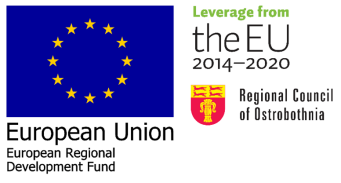DIGI-MODE Introductory webinar - learn about development of Digital Twins
The purpose of project DIGI-MODE is to promote increased usage of digital tools in regional companies. This is achieved through the planning and development of Digital Twins, with a focus on Virtual- and Augmented Reality solutions. The first of our webinars will introduce the concept of Digital Twins and the tools used to make them. We will showcase a number of preliminary prototypes being developed, as well as the workflow of 3D scanning a real location. The target demographics are regional companies , and teachers or students interested in the development of VR environments, 3D scanning, and Digital Twins in general.
When: March the 9th, at 11.00 to 12.00
Where: The webinar will be held over Webex: Webex link
Read more on the projects website.
Agenda
-
About project DIGI-MODE
-
Introduction to digital twins
-
Presentation of use cases and prototypes
-
Questions and answers
About the project
The DIGI-MODE project is a collaboration between the University of Vaasa, VAMK, Novia UAS and Åbo Akademi. The project will make use of the existing infrastructure available at the University of Vaasa, Technobothnia, the Design Centre MUOVA (VAMK) and Experience lab at Åbo Akademi. The project was funded by the European Regional Development Fund (ERDF).
The purpose of the DIGI-MODE project is to promote the increased usage of digital tools and in particular Virtual Reality solutions to companies located in Ostrobothnia. This is mainly achieved through the planning, development, demonstrations and validation of so-called digital twins. Three major digital twins will be developed in cooperation with local companies from different business sectors: The manufacturing industry, the real estate and construction sector and the energy sector.
A digital twin is a real-time virtual representation of a physical object or process. Digital twins can visualize data from different types of sensors, such as energy meters, water meters, cameras and other IoT devices. Using digital twins, it’s possible to streamline remote working, cooperation and maintenance. This is something which has grown increasingly relevant over the last few years.


